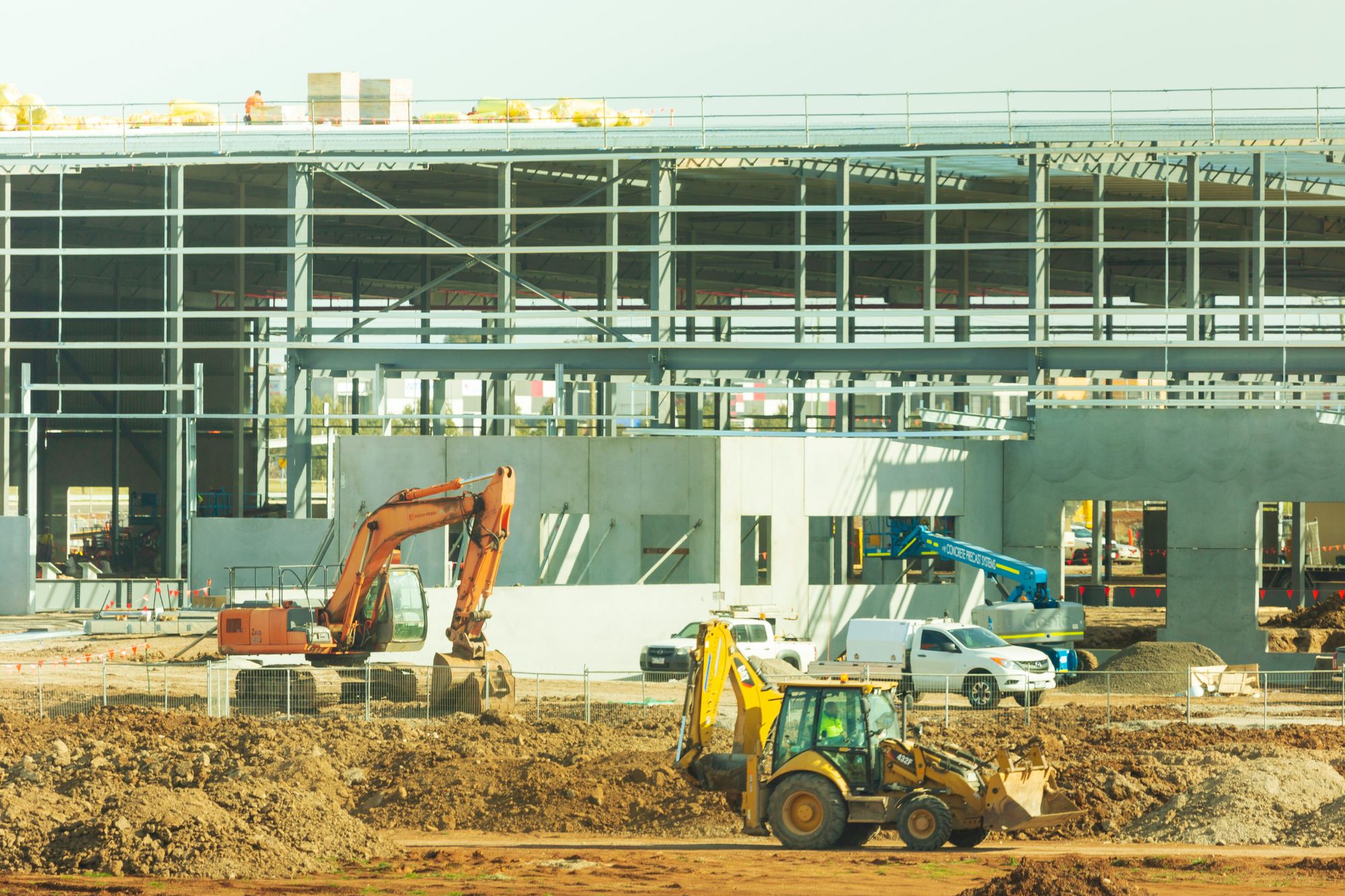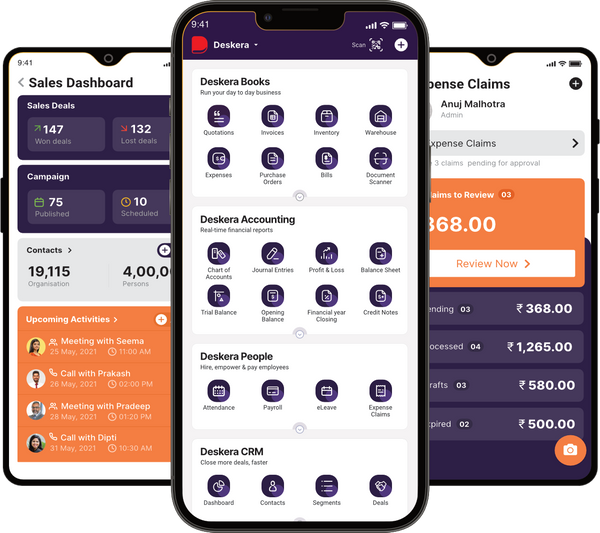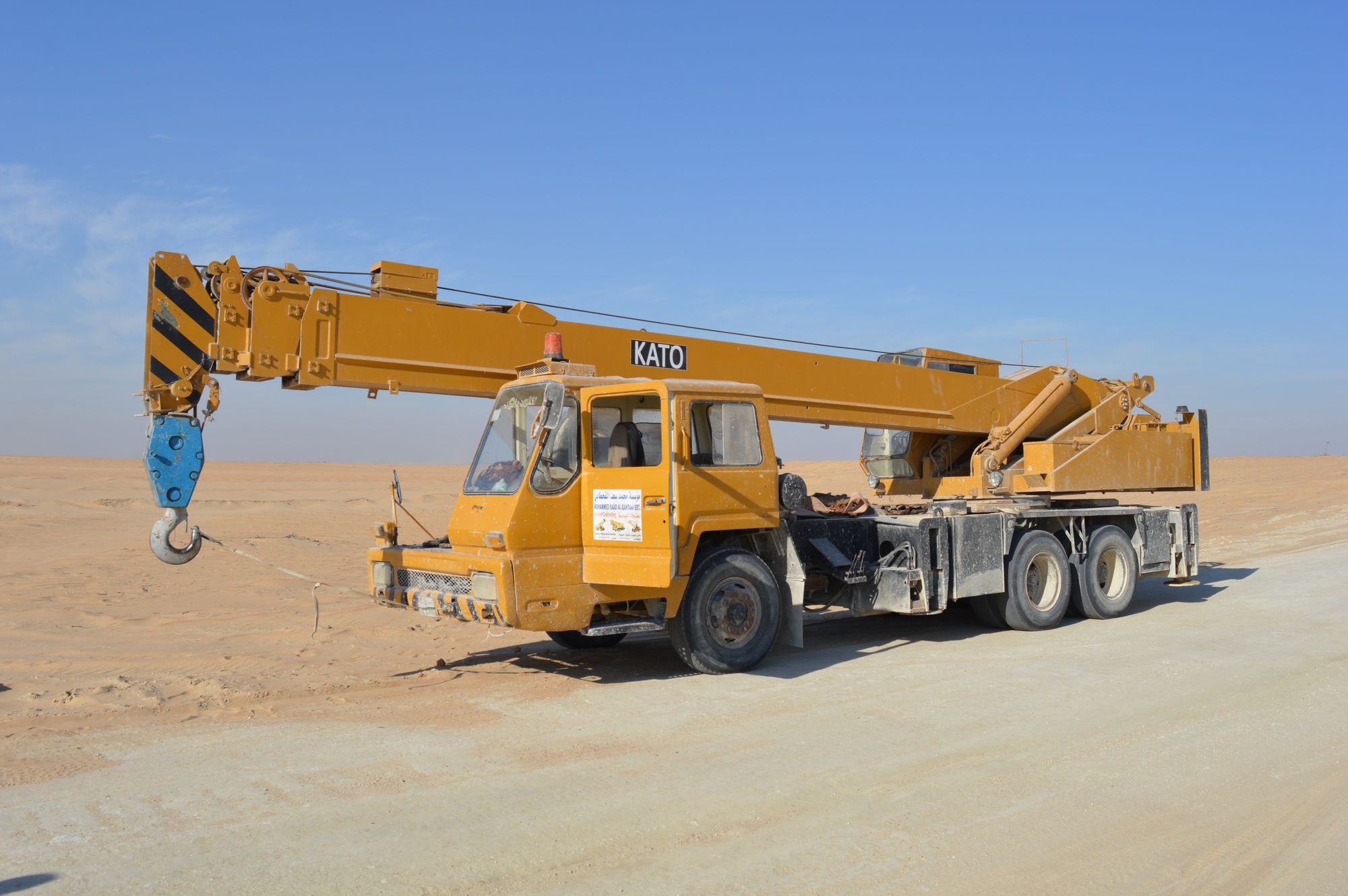Wondering what's going on in the Heavy Equipment Market? Well, construction equipment market players are introducing new equipment that is integrated with cutting-edge technologies like IoT and AI in response to the growing demand.

But when these trends change, the Heavy Equipment Industry faces a need for efficient inventory management. A solid heavy equipment inventory management system offers you a complete set of solutions. All year long, it enables you to log, monitor, and assess the performance of your equipment. Let's explore some requirements for well-organized heavy equipment inventory management in more detail.This article covers the following:
- Construction Equipment Management
- Benefits offered by Equipment Inventory Management Software
- Best practices for managing Heavy Equipments
- Challenges involved in Heavy Equipment Maintenance
- Drawbacks of Ineffective Management of Heavy Equipment
- Renting Heavy Equipments
- Key Takeaways
Construction Equipment Management
The process of directing and regulating construction equipment is known as construction equipment management. The equipment utilized by a construction company is managed by construction equipment managers.
They are in charge of getting the equipment, keeping it up to date, fixing it when necessary, and transporting, storing, and cleaning it. They are also in charge of maintaining inventory and allocating the appropriate tools for the work.
- Equipment asset management is a method that construction equipment managers use to properly monitor and manage their equipment.
- A solid management system will also help you find ways to store and safeguard your equipment more effectively.
- A business can increase the value of its construction equipment while lowering equipment costs by implementing sound management techniques.
- The majority of heavy equipment will eventually pay for itself, generating more revenue for your business than it cost you initially. In order to analyze and pinpoint the equipment break-even thresholds, construction equipment management assesses the cost of equipment ownership, including costs related to storing, utilizing, and repairing the machine.
- Managers can determine how many operational or idle costs their business is incurring in their evaluation.
Benefits offered by Equipment Inventory Management Software
The advantages of equipment inventory management software include:
- Maintaining correct asset data.
- Protecting an asset from loss and theft.
- Assuring asset management.
- Disposing of ghost assets.
- Lowering the cost of maintenance.
- Increasing equipment productivity.
- Reducing downtime while boosting up-time.
Best practices for managing Heavy Equipments
Construction organizations must be able to bill for certain construction locations or tasks, track expenses, mobilize assets, and measure utilization. To complete this accurately, you'll need thorough records, understanding, planning, tracking of KPIs (key performance indicators), and real-time visibility and equipment tracking.
Keep tabs on your Equipment
Heavy construction equipment inventory management places a high focus on maintaining the efficiency of your fleet. Monitoring the state of your equipment is one technique to maintain the functionality of your fleet without unanticipated failures or other problems. Although there are probably many various kinds of machinery in your fleet, there are a few universal warning signs that apply to most equipment types, such as:
- Grease fittings that are faulty or stained.
- Hairline cracks occurring on the frame and welds;
- Cracks in the windshield;
- Low coolant and gasoline levels;
- Dirty air filters;
- Worn tread, tyres, and tracks
You can prevent threats from seriously harming your equipment by conducting routine checks for these warning indications. Your business can start the repairs as soon as someone observes one of these cautionary indicators. Even though there are costs associated with completing these repairs, in the long term you can save money by avoiding the need for even more involved and costly repairs.
Examine Depreciation
Different equipments have several modes of operation. They must therefore need specialized care in order to perform at their peak. Plan for tracking tool depreciation to ensure that your organization gets the most out of its funding. With the aid of Inventory Management Software for heavy equipment, this is simple to complete.
You can record depreciation rates with the help of this tool to make scheduling maintenance appointments simpler. By using precautionary approaches, you can improve the overall effectiveness of work activities while lowering the likelihood of unforeseen breakdowns.
Seek Dealer Support
A good Heavy Construction Equipment inventory management system frequently includes a rule in place that specifies who handles repairs on damaged equipment: a reseller or the original manufacturer. Even if some of your employees may be capable of performing repairs, a dealer's understanding of their inventory is unrivaled. They ensure that your equipment receives the best maintenance and repairs possible thanks to their additional knowledge and experience.
You can more accurately estimate your costs by having dealers execute the necessary repairs. There is a greater likelihood that a repair from an unreliable source won't be done correctly. Inadequate fixes can result in future maintenance problems that are more serious and cost you more to fix. By working with a dealer instead of doing the repairs yourself or hiring a third party, you may better control the prices and condition of your fleet.
Inventory and Track your Heavy Equipment
A key component of efficient Construction Equipment inventory management is understanding which equipment is owned and which is rented. Components and tools should be part of this.
The next step is to figure out where they are. The best method to do this is to equip your trucks with a GPS tracking device. Assigning vehicles for pick-up and delivery, monitoring the transportation process, and returning equipment to its proper place at the conclusion of each day are all made possible by giving equipment managers complete visibility.
Inventory Tracking Options: Options for tracking your inventory typically include manual, periodic, and completely automated methods.
Manual
Sadly, this is how a lot of small construction companies handle their inventories. They keep things in their warehouse and on their truck. They occasionally count their inventory or receive notifications from their staff when specific things are needed. They purchase them as necessary. They keep a handwritten record or a spreadsheet to track their inventories.
Periodic
When using a periodic inventory management system, you count the goods you have on hand once or twice a week or month. You add the new counts to your spreadsheet or handwritten log. As a result of more frequent inventory updates, you get better accuracy. It gives you information on the things you use and the ones you could be ordering too much of.
Fully Automated
Bar-codes or Radio Frequency Identification (RFID) are used by fully automated inventory monitoring systems to monitor the movement of inventory items. Fixed tag readers used in active RFID systems scan things as they move, for example, around a warehouse. Bar-codes or RFID tags must be scanned in order to use passive RFID devices. An inventory management system automatically enters the data from either an active or passive system.
Information repository
The majority of companies undervalue the importance of databases. It is vitally essential that you save and keep track of all business activities when significant financial amounts are on the line. Software for heavy machinery maintenance makes this possible. As a useful addition to your business, this tool enables you to create service tickets for all of your maintenance activities.
This essentially means that you are able to remember any additional details needed to schedule maintenance and repair visits. Utilize a single source of information to gain access to a variety of data in order to run effective management operations!
Recognize the value of your equipment
In addition to knowing what you have and where it is, your organization should have thoroughly documented and up-to-date records of the worth of every piece of equipment it owns. When making insurance claims, buying, renting, or selling equipment, it's crucial to know the value of your equipment.
Should you decide to rent out your equipment, knowing the value of your equipment will help with cost calculations. Your comprehension of the remaining service life is also improved, which helps with selling and liquidation.
Keep a thorough record of every piece of equipment’s history, including:
- The maintenance and repair information;
- The date and price of purchase;
- The mileage at the time of purchase;
- The working environment; and
- The number of hours used.
Each of these elements affects how much your equipment is worth. Check the asking and sold prices of comparable equipment on a regular basis on auction websites. Utilize this information for your equipment management and record-keeping processes.
Integrations
Without connections with other heavy civil construction software, no heavy equipment inventory management software is a real solution. Contractor requests to share data between the systems they rely on and have invested time and money in are leading to the development of an increasing number of integrations.
A heavy equipment management system should contain the following two basic types of integrations:
Integrations of OEM/AEMP: It's probable that some of your heavy equipment’s manufacturers are already compiling telematic data on your machines on their own systems if you own and operate heavy machinery. To combine all of your fleet tracking data onto one system for convenience and efficiency, you'll need a heavy equipment fleet tracking solution that supports OEM telematics and AEMP connections.
Heavy Equipment Management Software delivers AEMP data to another through an OEM interface. As a result, if your fleet is made up of a variety of CAT, Komatsu, John Deere, Volvo, or other manufacturers that provide you with telematic data, you'll want it to feed into your primary heavy equipment tracking software so you can view that data alongside the data for the rest of your construction fleet assets.
Heavy Civil Construction Software: Your construction company's many teams probably utilize a variety of Heavy Civil Construction Software in their everyday operations, including project management, ERP, and accounting systems, as well as additional software platforms for upkeep or other purposes.
To facilitate the exchange of Heavy Equipment data with other teams who require it for operational or financial visibility, Heavy Equipment Inventory Management Software should be able to communicate with these other systems. Look for a system that offers ERP/Accounting System integrations, project management integrations, maintenance integrations, and other Software as a Service (SaaS) integrations in addition to OEM/AEMP integrations.
Mobile App to Scan QR Codes on Equipment
Equipment monitoring is increasingly using bar-code and QR code scanning. Although bar-code scanners and related hardware can help with organization and visibility, they can be prohibitively expensive. They don't offer the user any insight either.
Users of inventory management software for equipment can use their mobile device to read QR codes on equipment tags. Your team can use a mobile app to handle equipment instead of investing in new gear.
To check in or out a piece of equipment, read the item's specifications, or begin an inspection, team members can scan a QR code. This not only offers more information than a bar-code scanner, but it also gives consumers the ability to act, learn, and maintain accountability.
Operator’s training
Even if they try, equipment managers can't be everywhere at once, thus it is advantageous to have a well-trained crew of operators.
Effective operators make a positive difference on the equipment’s lifespan and the productivity of your business. The risk of equipment damage is reduced if they are meticulous with their daily inspections and run the machinery correctly. Drivers are the ones who know the equipment best because they spend so much time using it. They are able to identify performance variations that can be examined and flagged before they turn into a serious issue.
Managers can gain invaluable insights from these team members by keeping lines of communication open with them. Even while technology makes it possible for you to see a lot of information about the drivers and equipment, hearing it from the source is priceless.
Real-Time Equipment Notifications
Management of an equipment inventory involves more than just inventory levels. The most efficient equipment inventory management system encourages teamwork, which boosts productivity throughout the entire operation.
- On their mobile device, operators can update the status of the equipment and notify managers of any problems or changes. Managers receive immediate information of equipment difficulties rather than having to wait until the end of the day or the week to find out about them.
- Managers are able to proactively manage equipment maintenance and preserve productivity when the office and field are in constant communication. Managers may rapidly notify their team of modifications, duties, and responsibilities by updating data in Equipment Inventory Management Software.
- You and your team have total visibility into operations thanks to the quick notifications you receive regarding equipment status. You can stay informed of status changes and difficulties, hold your team members accountable, and make the best choices for your fleet by staying connected with a mobile-first software solution.
Check the equipment after use
Things can still be missed during daily checks or staff may forget to add something in their reports, even with a team of highly educated operators. Equipment managers must check every piece of equipment after usage, regardless.
It's important to prevent damage before it worsens and jeopardizes the company's overall profitability due to harsh working conditions or the operator's aggressive behavior.
Maintenance Schedules
This is made simpler by Heavy equipment maintenance software since it enables you to keep a history of all maintenance-related actions. Let's say you gave some assets a service session. By the end of the year, if your system is updated frequently with information on similar instances, you will have built up a comprehensive database.
- After that, this information can be modified to produce a report on adjustments to equipment service trends. By taking such proactive measures, your company is able to complement its strengths and increase efficiency.
- One of the most crucial things a construction business can do to prolong the life of their equipment and preserve production is preventative equipment maintenance.
- It is easier for the entire team to stay on top of equipment demands when managers develop Heavy Equipment preventative maintenance checklists for their operators to follow. This also enables proper repair scheduling as necessary.
Be ready for malfunctions
It is crucial to be ready for the worst because preventative maintenance cannot guarantee that there won't be any breakdowns. Even if you have enough equipment to support your current contracts, what would happen if many components of it broke down at once?
Construction Equipment managers must have a plan in place because breakdowns are unavoidable if they are to avoid significant project delays and hassles for all parties. Include other contingencies besides breakdowns, such as the non-appearance of a contractor or subcontractor or the availability of your preferred rental facility.
Properly Store Your Equipment
When you store your equipment incorrectly, it may break down sooner, costing you more money in repairs. Keeping your equipment in good condition and damage-free should be a part of any efficient Equipment Management strategy. Storing the equipment appropriately is one technique to achieve this goal.
- Despite being built to operate outdoors in challenging conditions, Heavy equipment nevertheless needs to be housed properly when not in use.
- Particularly when the equipment isn't in use and is placed in a potentially hazardous area, rusting due to moist weather can happen. Make sure your Equipment is stored somewhere dry and protected from the weather to prevent rust from developing on it.
- Covers made specifically for storage can be a wise investment to help preserve your machinery if you store your equipment outdoors. Long-term protection from the elements is provided by the covers. When your equipment needs to be stored, you can keep it even safer if you have storage facilities, but you'll need to account for their costs. It's great practice for those with facilities to include building charges in your overall equipment prices.
- Additionally, it's essential to store diesel fuel and coolants properly. Make sure there isn't any dirt, dust, or water nearby when you're storing them because those things can contaminate the liquids. In addition to causing technical problems, contaminants in coolant and fuel can weaken the structural integrity of your equipment. Maintain your gasoline and coolant in safe containers and settings, away from any potential impurities.
- The cost of repairs and replacement parts might be decreased as a result of efficient storage. Additionally, you may extend the life of your equipment and ensure that it maintains its value longer, allowing you to sell it for more money if you decide to upgrade.
Keep up with project details
The management of your Construction equipment is greatly aided by having a thorough awareness of all your tasks. It is easier to handle equipment requests and guarantee that the appropriate equipment is assigned to the right job when project specifics like timetables and budgets are known. Understanding project-specific details, such as the position and distance from the pick-up point, can aid with equipment selection, operator scheduling, maintenance, and even billing.
- How many times have you been forced to spend hours searching for lost equipment because no one took ownership? When fleet managers don't have a good equipment inventory management strategy in place, this might occur frequently.
- In addition to being annoying, it also hinders productivity.
- Monitoring equipment and encouraging accountability can be accomplished easily by allocating Equipment to certain operators. You can remotely arrange and assign equipment to your team by using Equipment Inventory Management Software. To prevent confusion on the workplace, users can receive information on Equipment assignments through their mobile app.
- Managers have access to an exhaustive audit trail of each piece of equipment’s usage thanks to equipment assignments. Managers can quickly check the location, status, and previous and present operators for each piece of equipment.
- Utilizing assignments in your system for managing your equipment inventory gives your team a sense of accountability. Operators are able to guarantee that equipment is safe, well-organized, and in good shape since they feel accountable for their own pieces of equipment.
Going paperless
Accurate statistics are required for efficient management. The information required to support efficient fleet management will be provided by maintaining thorough records of construction equipment information. We advise moving to a paperless system where all information can be securely kept and accessible anytime, anywhere by all stakeholders to ensure that this important information is not lost.
Equipment utilization and repair records are among the data that should be gathered or uploaded electronically.
This kind of information can be used to spot patterns, assess how lucrative a piece of equipment is, and support predictions. Equipment managers might also find underused items that are better off being rented out or subcontracted for.
Track Your Equipment Off-Site
Software and equipment tagging make tracking and ongoing location updates possible, which is a great method to gather information about heavy machinery.
- By providing decision-makers and stakeholders with this useful information, decisions regarding the life cycle and replacement can be made.
- Location updates support regulatory compliance, environmental studies, and employee accountability.
- Tracking heavy equipment prevents theft because it requires significant expense. Inventory control and potential law enforcement engagement are made easier when it is known where these assets are at all times, as well as who employees are in charge of them and when.
- The finest tracking method uses metal welded tags that are firmly fastened to priceless goods. These tags are strong and ideal for assets that are either permanently parked outside or spend the most of their time at work sites.
- As opposed to adhesive products, operators don't have to worry about the tag coming off.
- Then, real-time GPS tracking of the equipments is performed. Additionally, they might be followed by automated systems, staff utilizing handheld scanners or smart phone apps, or both.
- More information than only satellite location can be provided. They frequently exchange real-time information like temperature, surrounding humidity, mileage, operating time, and specific maintenance information.
Use the appropriate software
Data and a desire for ongoing optimization are necessary for effective construction equipment management. The job of a manager of construction equipment is made considerably simpler by using the proper management software to control trucks and other vehicles.
The ideal software for construction equipment managers would be that assists with
- Equipment tracking
- Inventory control
- Project management
- Maintenance planning
- Warranty tracking
- Work order management
To ensure that information is never lost or estimated, look for management software that is cloud-based. Make sure your system has sharing features so that all stakeholders and vendors can access the same data and help resolve conflicts.
- The majority of fleet managers would claim to be fully aware of their inventory of equipment. Sadly, they might not be as precise as they think with those counts.
- When managing equipment inventory on paper and with spreadsheets, information is frequently out of current. Take into account using software to automate equipment counts for a precise, current snapshot of your inventory.
- You can keep track of every aspect of your equipment, including value, status, and location, by tracking it in equipment management software. Fleet managers' customizable dashboards make it simple to see equipment inventory numbers.
- Accuracy is improved by comparing the quantity of inventory listed in your software with actual counts. Fleet managers can swiftly update their equipment inventory management and ensure that every piece of equipment is present and accounted for.
Challenges Involved In Heavy Equipment Maintenance in Different Industries
Fleet management for construction or heavy machinery is more difficult than it seems. Because managing a huge organization's equipment and assets is necessary. We'll go over some of the equipment management problems you'll run into below.
Possibility of Human Errors
The likelihood of making mistakes rises when working manually. The efficiency of the data will deteriorate if there are any errors when entering it. Since spreadsheets are free and provide for cost savings, many businesses utilize them for data entry.
Spreadsheet errors are common. Because manual inventory counts or equipment counts may take a while, you must ensure that the data you use is accurate.
Facilitating remote management
Enabling remote management for businesses that rely on conventional equipment management strategies becomes an impossible challenge. Assets and machinery are always shifting. It is difficult to determine the precise operational health of any asset without the proper integration of all pertinent and updated asset status and condition information into a centralized location.
The health, safety, comfort, and general well-being of the workers could all be seriously impacted by a subpar assessment of the mechanical and security components of this equipment. Poor integration also makes it difficult to act quickly when systems aren't functioning correctly, which has negative effects on compliance and safety in addition to operational efficiency.
Cost of maintenance
All businesses have always been concerned about maintenance costs due to the high cost of maintenance expenses. Even while routine maintenance is expensive, when it is neglected, it becomes even more expensive.
Unexpected equipment failure is a different factor. Equipment is expensive because it needs to be repaired quickly when it malfunctions.
Lack of Spares
Without high-quality replacement parts, even the best maintenance crew in the world won't be able to repair some issues with your equipment. You should thus order those components in advance and store them securely until your team requires them.
- Naturally, doing this for every component of every machine you own would be wasteful of both money and space. However, some parts of the equipment are designed to endure longer than others and frequently outlast the entire piece of equipment.
- Your service staff can be of assistance here.
- In order for the procurement team to place the part order promptly, regular maintenance can help your team maintain track of equipment parts that are expected to fail soon and make a notation in their report.
- In this manner, you'll have it ready when the workers need to replace the component.
- The owner's manuals for your equipment and replacement parts are another excellent source of information. They can inform you when you should replace particular items so you can prepare ahead of time.
- Keeping an inventory list of all your assets, including the spare parts, is another excellent strategy to remain on top of the need for replacement parts.
- If the list is on paper, it is practically useless when trying to find the specific item you require. Choose a cloud-based inventory database as an alternative.
- Such a database can assist you in keeping track of where your equipment and spare parts are located as well as in determining how many parts you need to buy.
Regular maintenance plan
Moving assets and equipment is a constant, particularly in sectors like construction. Heavy-duty machinery must be kept up-to-date to prevent not just increased maintenance expenses but also disruptions to regular operations and project delays.
Therefore, regular heavy equipment maintenance is required. It reduces the likelihood of unforeseen equipment failure and increases the dependability of assets. Choosing the maintenance planning system that will benefit your company is the first step in implementing a new maintenance strategy.
Cost allocation and charging
It might be challenging to allocate and charge costs for large-scale, multi-site construction projects. Initial capital expenditures (ownership), rental fees, and ongoing operation and maintenance expenses are all included in costs. The various cost sub-components that make up each of these key cost categories must be precisely tracked, computed, and managed.
It also becomes difficult to provide optimal cost management that is compatible with investment objectives without correct knowledge of the available assets and their state because the size of each of these cost components relies on the nature, size, and spread of the project.
Drawbacks of Ineffective Management of Heavy Equipment
When you examine the dangers of improper heavy equipment fleet management, its significance is simple to understand. We will thus talk about the drawbacks of subpar heavy equipment fleet management in this part.
Reduced ROI
It can be expensive to purchase, store, and maintain construction equipment. The lack of effective construction equipment management practices results in the vehicle never receiving planned maintenance.
It thus becomes less productive on the job site and wastes more resources. Maintenance costs are substantially more than they would have been with routine maintenance when it ultimately fails. Any financial benefit received from the operation of the truck may be outweighed by the entire cost of deficiencies and pricey repairs.
Delays in Projects
One of the most obvious symptoms of bad management is when the equipment is not where it should be. To keep the project on schedule, think about having workers on the job site spend time on low-importance tasks while they wait for equipment to arrive. This is tremendous resource wastage. The equipment is not producing any financial value while it is in motion. Instead, money is being wasted as the project stalls.
Insufficient Financial Reporting
Businesses need to determine where their resources might be better used. This, however, is very challenging to ascertain due to ineffective fleet management of construction equipment.
Asset management includes tagging and tracking the cost of ownership of equipment. This makes it possible for organizations to plan ahead for equipment needs and future investments.
Renting Heavy Equipments
Many businesses find it to be a wise choice to rent equipment. You might be working on a project that calls for a piece of machinery not currently in your fleet. You can receive the machine on time and for less money by renting the necessary equipment. Simply rent it for the project you need, then give it back when you're done.
Additionally, you can choose from a sizable selection of equipment, ensuring that you always have the modern conveniences needed for your jobs. When you rent, you don't have to make a long-term investment commitment and you don't have to worry about maintaining the equipment, which lowers the likelihood that you'll incur unforeseen costs.
Advantages of Renting Heavy Construction Equipment
Greater flexibility
Contractors' decisions to purchase new heavy equipment are being affected by more than just increased ownership expenses. Due to the dynamic nature of the construction sector, increased demand for equipment rentals has been greatly influenced by market changes.
In general, it might be challenging to forecast how a project will develop. You might discover that the heavy machinery you already own is insufficient.
- For instance, you won't be able to use them if you have limited access to a building site that needs little equipment but only owns massive, heavy equipment. The equipment that isn't in use is also the most expensive.
- You can use rental firms to solve this issue. You can locate gear there that will suit the requirements of your project from their extensive inventory of heavy equipment. even if the project's scope changes unpredictably.
- Finding new business prospects is another advantage of hiring heavy machinery.
- You are not obligated to work on specific projects since you lack the tools with the essential capacities and characteristics. Regardless of the size, you can just rent what you require for each new job.
- Find the best tool for the job by trying out various models and brands without making a commitment. However, you can return it for a full refund if you change your mind.
- If you simply used the equipment you bought, it would be impossible to be flexible and take advantage of more business chances.
Updated equipment
Heavy equipment that is brand new is pricey. However, if you have the option to rent, you'll have access to the best tools accessible.
You'll experience the strength and accuracy of cutting-edge equipment while also saving money. Additionally, your team will enjoy working with newer, more capable equipment.
Reduce Storage and Transportation Costs
Any buyer of new equipment will want both a short-term and long-term storage option for it. Nobody wants to leave a crucial new piece of equipment outside in the sweltering heat, pouring rain, or howling wind.
Equipment quality will be diminished by ongoing exposure to the weather and an unventilated storage area.
- No matter where you reside or what you want to use the space for, everyone is aware of how expensive it is, which is why renting equipment eliminates the need for long-term storage.
- Renting allows you to simply have the equipment delivered and picked up as needed, relieving you of the complexities of moving equipment from one location to another.
- You may be able to respond to various requirements in various places more quickly.
- Operations may be streamlined, workdays can be cut short, and money can be saved with careful planning of where to position what equipment when and for how long.
But managing that level of precision may be taxing and take focus away from a company's core competencies, so the stressed-out project managers and owners may find more value in renting equipment.
Equipment Depreciation
When purchasing a piece of heavy equipment, depreciation costs must be taken into account. Everyone is aware that you will never be able to recoup your investment because equipment worth rapidly drops over time.
You won't have to worry about depreciation if you decide to rent your heavy equipment. Since you don't own the equipment, you are not required to consider its resale value or keep it in excellent shape to lower excessive depreciation expenses.
Your responsibility stops once you return the equipment because your investment in it is secured during the rental time. Consequently, all depreciation charges are gone.
Borrowing Power
Banks assess rented and owned equipment in a similar manner to how the Internal Revenue Service does. Renting equipment keeps a company's ability to borrow money stronger because they do not view leasing costs as a problem on the balance sheet. Considering assets and liabilities, a loan for capital-equipment or an old machine may deteriorate a company's overall financial image depending on the figures and conditions.
Lower payments
Renting choices make the payments you do have to make much more manageable. You can pay in installments while renting your equipment.
For managers or business owners who need to keep track of regular payments, this is a fantastic alternative. Additionally, you can rent various kinds of equipment at various times. Rent the tools you require when you need them based on your construction tasks.
Save money for taxes
Rental expenses are deductible while acquired equipment is taxed at a depreciated rate over its lifespan, even though various conditions apply to a particular business' tax return. Rental costs typically offer a little more financial flexibility than significant capital expenditures like large purchases. Because of the nature of some businesses, they may occasionally be considered project expenses or have some other form of tax benefit available.
Not responsible for maintenance
You can forget about worrying about routine maintenance checks when you rent equipment. Maintenance is frequently covered by rental agreements. This implies that you won't be held accountable if equipment malfunctions unexpectedly while you're working. Your staff will benefit from this bonus by saving time, money, and stress. Even if you have a skilled maintenance crew, keeping your equipment maintained can become a burden.
For a construction company, checking fluids and hydraulics, then replacing parts and upgrading technology, may be a major logistical and financial challenge. Although equipment malfunctions are regrettably rather frequent, the equipment must be constantly inspected to ensure that they adhere to safety standards. Maintaining your equipment is an additional duty when you own it.
Disadvantages of Renting Heavy Construction Equipment
Equipment Availability
The worst part of renting is the possibility that the equipment you require won't be available. You'll have to work with the rental agency's inventory and schedule. Additionally, certain models or brands might not be accessible. Owning your own tools ensures that you are utilizing the model and variety required for the task.
Long-term price rises
Although you won't have to pay for heavy equipment up front if you rent it, the expense of long-term rentals might add up. What kind of equipment you require and how long you need it will determine this in major part. Monthly leasing agreements are frequently worthwhile because the total payment does not equal the cost of purchasing.
However, if you've been renting for a while, you might want to consider getting your own equipment. Still a fantastic choice for short-term projects, renting.
No return from the investment
There is no return on investment because you don't own the equipment. Renting out your heavy equipment won't ever result in a return on your investment. In the event that you decide to buy, you'll probably get some of your money back. A portion of your investment will be returned if you maintain your equipment well over time.
How does Deskera help with ERP for Heavy Equipment Industry?
Deskera is proud to offer ERP software to enterprises operating in heavy machinery. Deskera's all-in-one platform combines accounting, CRM, and HR software for the expansion of your organization. It is the finest option in ERP for SMEs as it is a reliable software solution.
Deskera Books can help you automate and mitigate your business risks. Creating invoices becomes easier with Deskera, which automates a lot of other procedures, reducing your team's administrative workload. To explore more check out our article on ERP for Heavy Equipment Industry.

- Deskera supports advanced inventory management through serial, batch, bill of materials, various warehouses, stock transfers and adjustments, among other features.
- Deskera helps automate marketing, lead generation, sales, and after-sales operations of Heavy Equipment.
- Deskera CRM Dashboard allows you to access deals reports, contact reports, and newly created activities in real-time.
Key Takeaways
- These are some of the most important tips for managing equipment. We are aware that handling all of this equipment manually can be a demanding chore, thus purchasing automated software is very crucial for organizational development.
- Find a solution for managing your equipment that is both affordable and suitable for your requirements. Most organizations won't be able to handle all of their costly equipment using a locked cabinet and a spreadsheet inventory, but some might be able to.
- In order to ensure compliance and safety, equipment management software is a crucial component of maintenance management software. Compliance upkeep is crucial for an organization.
- Systems for tracking equipment inventory can be modified to help with other crucial business operations like enhancing quality controls. Some systems allow you to incorporate sign-out and sign-in checklists into the access control terminal. These personalized checklists ask users to indicate that activities have been finished.
Related Articles











